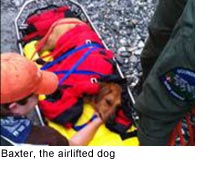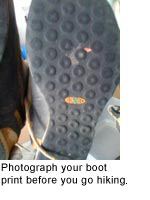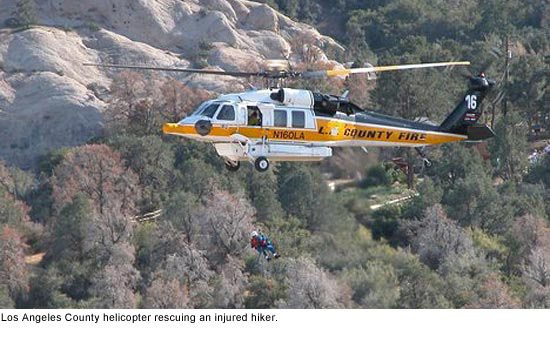Happy trails with hiking safety tips
August 3, 2011
Baxter, the hiking dog, captured headlines last weekend with his now world-famous airlift from a San Dimas-area trail. But he and his owners were far from the only nature lovers who’ve needed a rescue this summer.
During the last week of July, local search and rescue workers came to the aid of an injured climber in one area near Malibu and a lost hiker in another. Near the Angeles National Forest, they pulled a 77-year-old man from a ravine and a fallen hiker from a pool at the base of a rock pile. They helped find a day-tripper who had gone missing near Topanga Canyon. And that’s not including the two motorists who had to be plucked from the Santa Monica Mountains after their vehicles careened into canyons, or the diving accident off Santa Catalina Island.
“It was a fairly normal week,” says Los Angeles County Sheriff’s Sgt. Jack Ewell of the department’s Special Enforcement Bureau, which coordinates an estimated 350 search and rescue missions a year in Los Angeles County. “You have to remember, the county is about 4,000 square miles, and the weather has been nice.”
 Thousands safely and happily take advantage of Los Angeles’ wilderness areas without incident year-round. Nonetheless, L.A. County remains one of the nation’s most active search-and-rescue hotspots, and this summer’s almost daily demand offers a sobering reminder of the need for hikers to take precautions when they head for the great outdoors.
Thousands safely and happily take advantage of Los Angeles’ wilderness areas without incident year-round. Nonetheless, L.A. County remains one of the nation’s most active search-and-rescue hotspots, and this summer’s almost daily demand offers a sobering reminder of the need for hikers to take precautions when they head for the great outdoors.
Ewell and others urge hikers to add just a couple of small steps to their preparations. Just a little bit of planning can make a big difference in the event that something happens to go wrong.
For example, one of the most valuable tips is now also one of the easiest to follow, thanks to a new online hiking plan form created by the Los Angeles County Sheriff’s Department. (Download one here.)
The form allows you to create a list of all the vital information about your hiking party, your proposed campsites and hiking route, your planned start and return dates and what vehicles and supplies you’ll have with you. You can augment it, if you like, with a photograph of the bottom of your hiking boots, so that if you get lost, trackers can more easily find you.
“If something happens, this gives us the information we need to go in and assist you,” says Ewell. “Just leave it with a friend or relative.”
Another bit of advice hikers ignore at their peril? Bring the right stuff. Remember that you’re going into the wilderness.
“Don’t go hiking in flip flops,” Ewell says. “Bring water and a GPS and a cell phone. Check the forecast. It might be a hundred degrees when you leave the house, but it can get down to 30 degrees in some places at night.” The National Park Service offers more of these kinds of useful tips.
 If you’re thinking about backpacking or camping, get the right vaccinations and practice fire and water safety. The Centers for Disease Control and Prevention has a comprehensive checklist here.
If you’re thinking about backpacking or camping, get the right vaccinations and practice fire and water safety. The Centers for Disease Control and Prevention has a comprehensive checklist here.
Finally, don’t end up like the couple who made headlines last weekend when their 80-pound Labrador mix, Baxter, couldn’t handle the rocky terrain on the Bridge To Nowhere Trail in the Angeles National Forest and had to be airlifted to safety.
Think twice before you take your pets hiking. Los Angeles has plenty of open space for animals and people to share, and some areas, such as Griffith Park, are safe for well-trained pets. However, pet access is fairly limited in the state and national park systems, and many wild areas are unsafe for Fido and Fifi.
If you insist on hitting the trail with an animal companion, do look out for your best friend—bring extra water, check his or her foot pads often and keep an eye out for porcupines, skunks and other hazards.
For more tips on hiking with pets, click here and here. Or follow Ewell’s advice: “Unless it’s a very easy hike, I really wouldn’t bring your pet with you at all.”
Posted 8/3/11













 405 bridge work causes a stink
405 bridge work causes a stink





